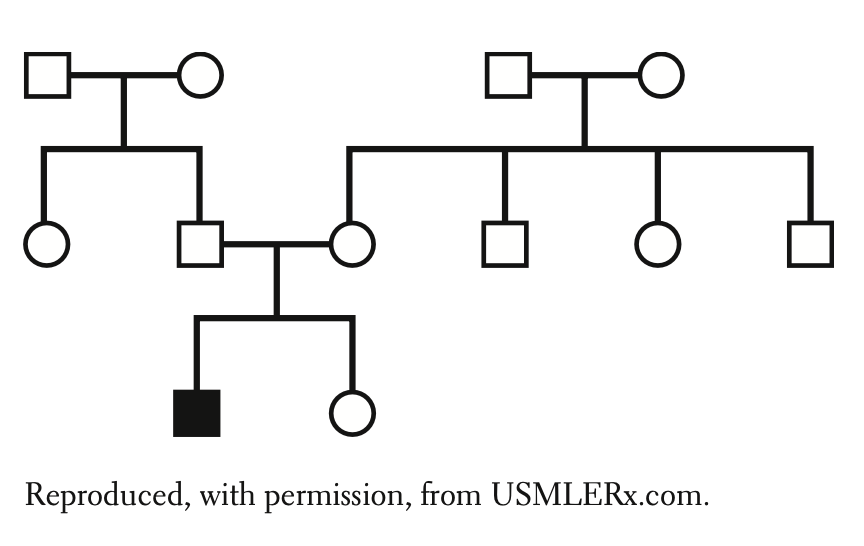A 2-month-old boy is brought to the emer- gency department with respiratory insuffi- ciency and failure to thrive. The pregnancy and perinatal course were uneventful. Gener- alized hypotonia, tongue fasciculations, and flaccid paralysis are noted on physical exami- nation. His hospital stay is complicated by the development of tracheobronchomalacia and respiratory insufficiency that necessitates me- chanical ventilation. Despite these efforts, the patient dies of respiratory complications. Muscle biopsy shows denervation and panfas- cicular atrophy. A genetics consult yields the pedigree shown in the image. Which of the following diseases is most consistent with this patient’s presentation and the pedigree shown in the image?
(A) Becker muscular dystrophy
(B) Duchenne muscular dystrophy
(C) Kugelberg-Welander disease
(D) Spinal muscular atrophy, type II
(E) Werdnig-Hoffmann disease
